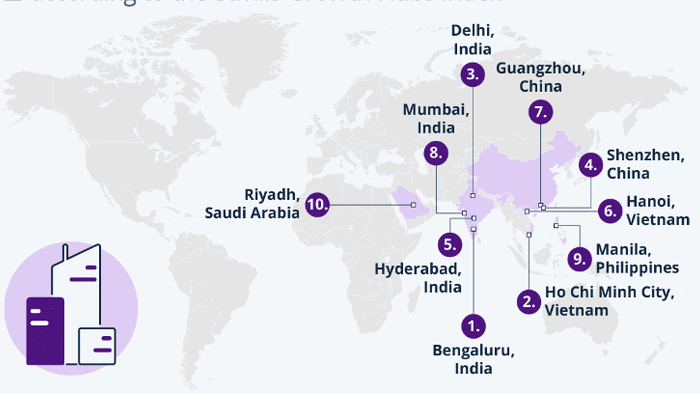According to the Growth Hub Index 2024 compiled by British real estate service Savills, Asia is poised to dominate the global growth landscape, with 14 out of the top 15 growth hubs projected to be located in the region by the year 2033. This assessment is based on various key indicators that measure rising wealth, expanding economies, and forthcoming opportunities for development and business expansion. A notable highlight of the report is that Bengaluru tops the list of the fastest-growing cities, closely followed by Ho Chi Minh City in Vietnam and Delhi in India. The high ranking of these cities signals a significant shift towards urbanization and economic proliferation in Asia, underscoring the region’s potential for sustainable growth.
Several driving factors contribute to this anticipated economic rise in Asia. A significant element is the prevalent embrace of technology-driven growth, which is utilized alongside the continued dominance of the traditional manufacturing sector. This balance allows for a multifunctional economic structure conducive to growth and adaptability. Furthermore, projections indicate a burgeoning middle class as personal wealth in these cities increases. Investments in infrastructure alongside strategic improvements in connectivity also play crucial roles in facilitating these urban transformations. This holistic approach positions Asian cities favorably in the global economic landscape.
The Savills report reflects the potential of innovation hubs in these emerging cities to attract businesses, thereby boosting demand for various types of spaces—including office, manufacturing, and housing. It is emphasized that if rapid urbanization is managed effectively, it can result in enhanced health outcomes, better educational prospects, and improved employment opportunities for their populations. However, it is also cautioned that poorly managed urban growth could lead to detrimental consequences, such as exacerbated poverty, increased crime rates, and health concerns, negatively impacting the very populations these cities aim to uplift.
The Growth Hub Index employs a comprehensive methodology that evaluates cities based on economic, population, and wealth indicators, focusing exclusively on cities with a GDP exceeding $50 billion in 2023. The economic indices considered include projected GDP for 2033 and future credit ratings, alongside the anticipated percentage growth in city GDP between 2023 and 2033. Indicator metrics for personal wealth evaluated the expected rise in GDP per capita and the number of households earning over $70,000 over the next decade. Additionally, population dynamics, including growth rates and migration trends, were scrutinized, providing a multifaceted view of each city’s potential for growth.
The cities selected for the index underscore a remarkable correlation between successful economic and population growth and the development of urban infrastructure. With the robust urban agglomeration in these cities, there come unique challenges and opportunities. Planning for sustainable urban environments that accommodate growing populations requires foresight and innovative solutions to ensure quality of life improvements and economic vitality. Emphasizing the dual nature of the urban growth narrative, the index serves as a vital tool for understanding the potential trajectories of these cities as they navigate both opportunities and obstacles in their expansion efforts.
In summary, Asia is on the brink of a transformative decade, with cities like Bengaluru, Ho Chi Minh City, and Delhi leading the charge as projected growth hubs. Powered by a combination of technological advancement, a rising middle class, and strategic infrastructure investments, these cities represent vibrant ecosystems for expansion. The lessons from the Growth Hub Index 2024 emphasize the importance of careful management of rapid urbanization to harness its benefits fully while avoiding the pitfalls that can arise with such swift transformations. With the right strategies in place, these emerging hubs can serve as templates for sustainable urban growth, influencing economic patterns well beyond their geographic boundaries.

